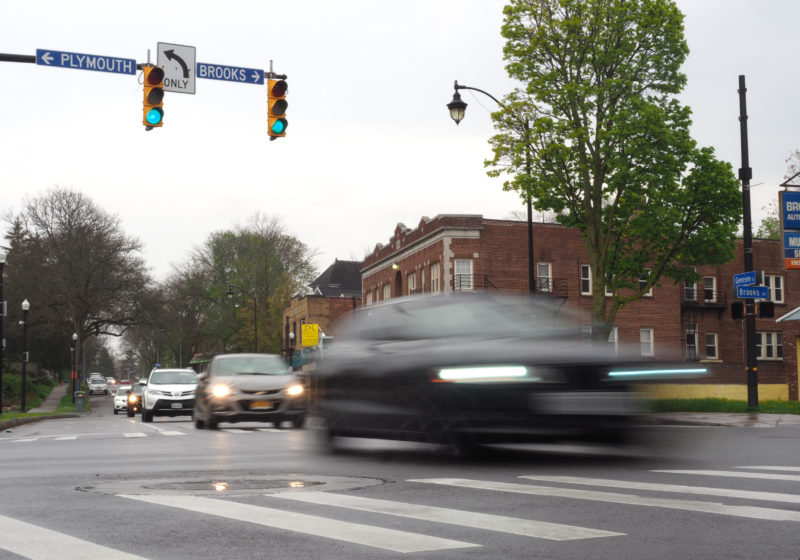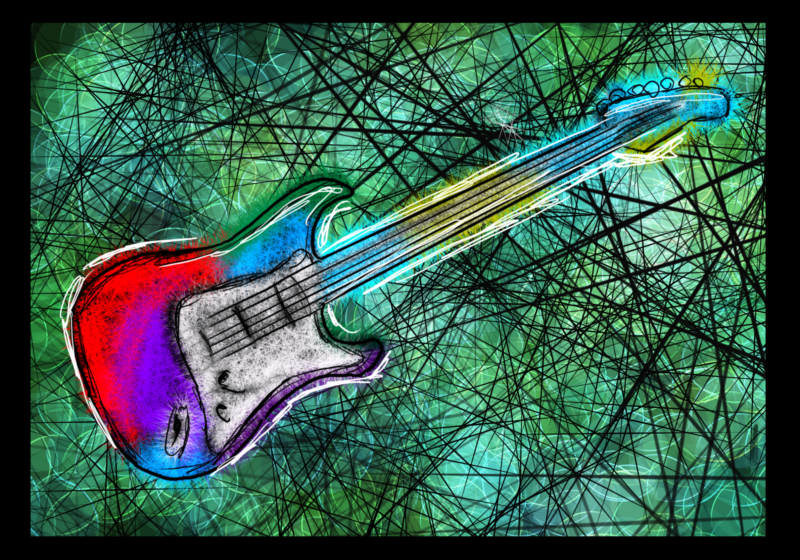My first memory of the pedestrian bridge is from my sophomore year, when I didn’t know where I was going. “The 19th Ward,” said the older student walking with me. “I’m going to live here.”
He didn’t say it out loud, but he didn’t have to — I could tell he thought the area was dangerous, that he was being brave and gracious by choosing to live there anyway. Based on how UR and its students usually spoke about the 19th Ward, that wasn’t surprising. My impression of the neighborhood was also negative, influenced by two years of Public Safety issuing campus-wide emails about another mugging, another armed robbery happening on the pedestrian bridge.
UR has made attempts to improve relations between the neighborhood and campus, to varying degrees of success. The Neighborhood Ambassador program describes itself as having been created for many reasons, but also (almost as an afterthought) to “assist in building better relations with long-term neighborhood residents.”
There’s the more service-focused Center for Community Engagement, which encourages social work, community leadership, and “breaking the bubble” that separates UR from surrounding neighborhoods.
“From a history perspective, [UR] has been very strategic, not transparent,” Dorian Hall, a member and board leader of the PLEX Neighborhood Association, said. He attributed his optimism for the future of community-University relations to the newest University President, Sarah Mangelsdorf. “She seemed to be more inclusive and willing to work with folks,” Hall said. But not every UR president has made him feel that way.
A resident of Plymouth-Exchange for the bulk of his life, Hall remembered playing in empty plots of land as a child, realizing as he got older that these plots were long-meditated areas for University construction. “I wish [UR] was more inclusive. I wish they would have spoke to […] folks who were involved in community organization and told them, ‘Hey, we’re looking to expand.’”
Sometimes, University presence in surrounding neighborhoods has even felt dangerous to residents. Hall explained how, while UR was grappling with whether or not to arm on-campus Public Safety officers, they were already driving “through my neighborhood with arms, which was terrible,” Dorian said. “If something happens and UR security guards come, the cops are going to immediately side with the University. I would see community members having issues with security guards who started thinking they were cops. There’s no need to have security guards with guns off-campus.”
There isn’t. UR students and community members have pushed back on the practice with a petition, but as of now, according to a Sept. 2020 Campus Times article, there are no plans from the school to disarm already armed officers. Having what’s essentially a private police force patrol communities like PLEX or the 19th Ward is unignorable in its racism and underlying hope for violence.
In the 19th Ward specifically, racism has actively been an issue for the better part of the last two centuries. For about half of the 20th century, the Ward was a majority-white, middle class suburb. That changed with the Second Great Migration, when northern cities drew in Black workers from the south with industrial job opportunities, sparking an extant white panic and sense of mistrust about the neighborhood.
As one might expect of a time when Jim Crow laws were still very much in effect, the then-new diversity of the 19th Ward, for many white residents, felt like the beginning of the end. They began to move en masse.
Opportunistic real estate developers began blockbusting, getting paranoid white homeowners to sell their houses before they were “devalued” by Black residents. Hopeful Black residents were then sold those houses at unfair, inflated prices and forced into accepting them because of limited housing choices. The 19th Ward was also a focus of redlining efforts, a real estate practice in which majority-Black neighborhoods were indicated unfit for insured mortgages. Although racism in Rochester today isn’t (always) as explicit as it was in the mid-to-late 20th century, it’s extremely difficult to ignore that the Ward is a neighborhood with a median income of about $31,000 while the average UR student has a median family income of $126,000.
Both blockbusting and redlining are underhanded forms of segregation, and in 1965, some residents formed the 19th Ward Community Association to push back against racist real estate practices and encourage a diverse Ward. Former Association staff member Roger Levy remembered when the Association first proposed the pedestrian bridge in 1991. “Both sides were opposed to it,” he said. “The neighborhood thought that crazy drunken frat boys would come over by the dozen and break their windows, the people in the University thought the inner-city kids would come over the bridge and mug them.”
Understanding the Ward’s history as a segregated neighborhood helps explain the way it exists today, with racist bridge fears permeating the University campus while Rochester community members struggle simply for a loving, safe, and fun community. Every longtime resident that I spoke to for this article made it clear that they had no problems with students in the community. But they also felt that UR has a responsibility to the community that it hasn’t really carried out yet. Maybe UR could help neighborhood businesses succeed or just allow for more community input in University decisions.
UR is a behemoth, and the 19th Ward is its smaller, softer neighbor. It’s clear that their relationship has issues with trust and responsibility. “There’s always resentment between the neighborhood and the University,” Levy said. “The University is bureaucratic. On the other hand, the University is a huge employer. It’s a love-hate relationship.”
The mostly white campus’ fear of the Ward, only for those same mostly white students to eventually live in it, can feel predatory. Most of the time, it isn’t meant that way. But residents are sick of real estate developers and opaque University zoning decisions.
Until the University makes a bigger gesture to the community than those it’s made in the past, residents will continue to fight for their beloved neighborhood. And students will sit in their dorm buildings or rented rooms, stressed, overworked, and only occasionally glancing outside.





